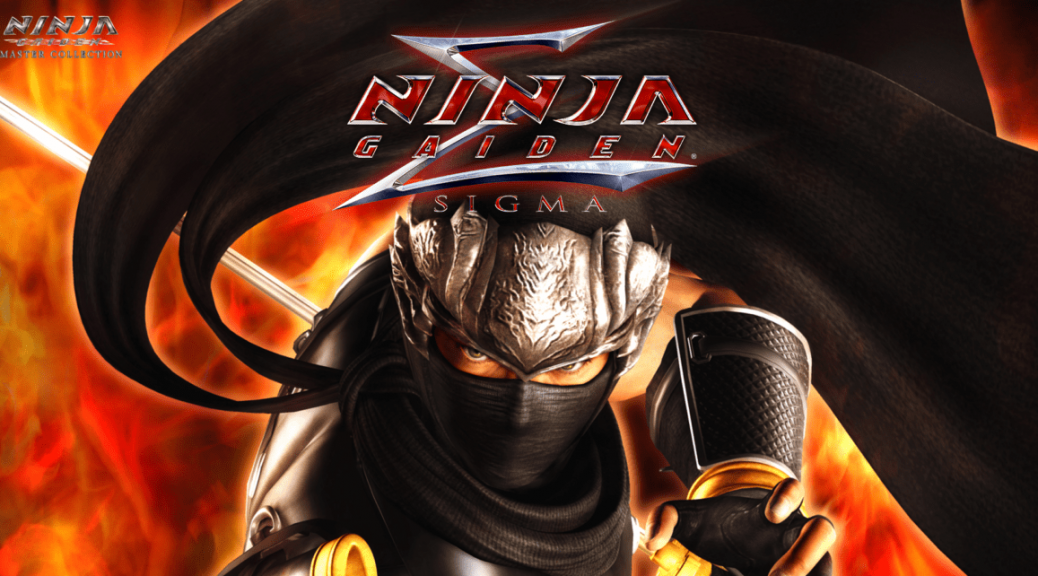
Ninja Gaiden Sigma
I give Team Ninja a lot of shit, but it’s recently occurred to me that the only titles of theirs I’ve actually played are Metroid: Other M, Hyrule Warriors, and Dead or Alive Xtreme 2 (it came with my 360, I swear). None of these are considered flagship releases, so I thought it might be worthwhile to see if there was any merit to one of the games that first put the company on the map. But Ninja Gaiden is not an easy game to meet halfway. Even disregarding the rampant misogyny that plagues the company’s output, their early games were all helmed by a man who could charitably be called the Japanese John Romero, and every awkward design choice reeks of his myopic logic of what games are allowed to be. On the other hand, he publicly denounced the Sigma rerelease, apparently solely because he didn’t contribute to it, so I can get some indirect enjoyment from knowing that that was the version I paid money for.
The first thing that anyone ever has to say about Ninja Gaiden is that it’s unforgivingly difficult, which is completely true, albeit an oversimplification. The common explanations for its difficulty are that the enemies don’t bother waiting their turn to attack, and when they attack, they hit hard. These are also true, but they’re far from the only explanations, and they aren’t responsible for why the difficulty is so annoying. That comes from enemies that switch between blockable and unblockable attacks without pattern or warning, a counter attack that only works when it’s in a good mood, and inconvenient level design that facilitates unnecessary enemy respawns and turns the camera into a secondary antagonist. The difficulty settings change enemy types and layouts, rather than just scaling their damage output, which is something I wish more games would do, but thanks to these universal obstacles, I have zero desire play another round and see the full effects.
The second thing everyone notes about Ninja Gaiden is that it was one of the most visually impressive Xbox titles. This is also true. Even if the technical specs are now outdated, the game benefits from a clean visual design that ensures it holds up remarkably well over a decade later. More importantly, it allows the viewer to appreciate the smooth, brutal animation that perhaps could have made the combat sensational if it wasn’t so unfair and inconsistent. Much like its closest competitor Devil May Cry, it may actually be more fun to watch a high-level player tackle the gameplay than it is to engage with it yourself. Although if the two games must be compared, NG’s platforming controls and audio design are superior to DMC’s, but its atmosphere and aesthetics are weaker, and its story is even more anemic and embarrassing, if you can believe that.
What’s most disappointing about Ninja Gaiden is that it didn’t need to anchor its identity to its difficulty. There are a number of unique mechanics here that could have sold the game: you can run on water, slam enemies against walls for extra damage, and sacrifice health pickups to charge special attacks, just to name a few. Apparently, it even uses an automatic priority system to target the most important enemy in lieu of a lock-on feature, which is neat…until it targets something you don’t want it to, at which point you’ll wish it just used a damn lock-on feature. Sigma doesn’t really address any of the game’s shortcomings, either; giving the fanservice damsel in distress a playable role was a good idea, but the extra levels themselves are just pointless repetition, and while I appreciate the streamlining of the out-of-place puzzle segments, replacing them with nothing wasn’t ideal. No matter which version you play, it’s an occasionally exciting, more-than-occasionally tiresome monument to gaming’s adolescent years, when just having action scenes that looked sufficiently like a movie’s was enough to net Game of the Year nominations.